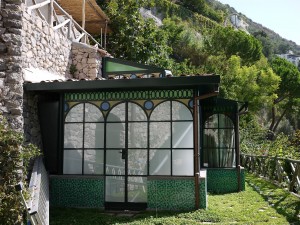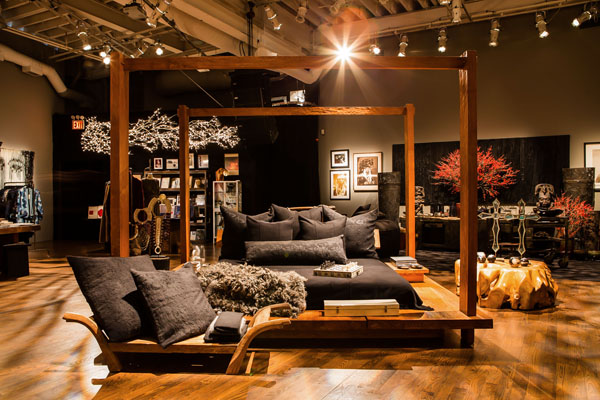 The towns and villages of the Amalfi Coast are strung like beads along one of the most remarkable chains in the world – the Amalfi Drive. Built in the last 70 years (some say by American GIs during World War II but no need to bring the Americans in to it; Italian road builders are renowned for their prowess, examples of which can be seen as far afield as the Rift Valley in Kenya), this remarkable road, carved out of the sea cliff, connects villages both spectacular and simple. With histories that stretch back through time, many carry an aura of mystery, glamour and seduction, like a perfume that lingers. They, and the illustrious and notorious who have made them home, have stories to tell.
The towns and villages of the Amalfi Coast are strung like beads along one of the most remarkable chains in the world – the Amalfi Drive. Built in the last 70 years (some say by American GIs during World War II but no need to bring the Americans in to it; Italian road builders are renowned for their prowess, examples of which can be seen as far afield as the Rift Valley in Kenya), this remarkable road, carved out of the sea cliff, connects villages both spectacular and simple. With histories that stretch back through time, many carry an aura of mystery, glamour and seduction, like a perfume that lingers. They, and the illustrious and notorious who have made them home, have stories to tell.
Positano climbs the sea cliff from its black sand beach in a haphazard manner. There is little of architectural beauty – the majolica-tiled church cupola excepted – at first glance. It takes a keen eye to trace a roof line back, to follow the pergola of a garden disappearing into the mountain. With patience, gems begin to emerge from the cliff face and questions tickle: How was that house constructed in such a precarious position? Who walks the beautiful garden that disappears in to the mountain side?
One of the most interesting characters of the coast is Franco Sersale, a Neapolitan who, along with his two brothers and father, built Le Sirenuse in 1951. One of the most beloved hotels in all of Italy, Le Sirenuse grew from a few stylish rooms in the original house and chapel to a 62-bed property now run by Franco’s son, Antonio. Franco’s vision for the hotel is no less than his vision for his life; a tireless wanderer of the earth, he has created a work of art of his travels, bringing home photographs from its furthest corners to construct an archive documenting a world so vastly changed or, in some cases, no longer extant. Many of his black and white images hang on the walls of the hotel.
I would love to settle down in Le Sirenuse’s winter bar with Franco and listen to his tales of the other characters who have found respite along the coast: Forster, Goethe, Wagner, Ruskin, Vidal, Essad Bey, Nureyev, Zefirelli are just a few. The Amalfi Coast has spoken to writers and artists and thinkers, has offered respite from flight and freedom from judgment. Long before it became a cruise line port of call, it was safe harbor for an alternative lifestyle.
There are others beside Franco who remember the stories, the beautiful faces and the passions that enticed some to stay and drove others away. One of these individuals has recently created a charming hotel with only a handful of rooms from the former house of Franco Zefirelli. The Greenhouse, in the photo above, forms a unique part of that property. But as beautiful as Le Tre Ville is, to me the aesthetic beauty of this property is exponentially enhanced by the ghosts of the past who must have spent many happy hours looking out to Li Galli and the sea beyond, and for whom the lovely suites are named.
 Since 2007, when fashion designer and philanthropist Donna Karan founded the Urban Zen Foundation, an inspiringly beautiful holiday market appears at 705 Greenwich Street in lower Manhattan. Each year, Karan creates a marketplace that combines humanitarianism with consumerism, promoting shopping with a purpose. The Foundation is dedicated to three initiatives: preservation of culture (past); bringing mind, body and spirit to healthcare (present); education (future.) The opening last night featured more than 40 artisans from countries as diverse as Colombia, Kyrgyzstan, India, South Africa and Mexico, artisans that exhibit at the International Folk Art Market in the Southwest each summer. The space is the perfect venue in which to display fabrics and objects, photographs and fashion in such a way that they - and you - feel instantly at home.
Of particular beauty were the feather light shrugs, coats and jackets of Farzana Sharshenbieva from Kyrgyzstan; the magnificently, finely tie dyed bandhani silk scarves of Gujarati Abduljabbar Khatri; the sensuous Zulu pots of Jabulile Nala whose mother is considered a national treasure. I adored the heavy, indigo dyed raw cotton jackets of Laotian Boukhong Signavong that greet you as you enter this magical space.
There is nothing more healing, nothing more inspiring, nothing more warming than to be in the presence of passionate artisans who draw beauty from their souls to share it with others. It was hard to leave Urban Zen last night, so hard, in fact, that I shall return tomorrow."
["post_title"]=>
string(42) "Urban Zen Promotes Shopping With A Purpose"
["post_excerpt"]=>
string(0) ""
["post_status"]=>
string(7) "publish"
["comment_status"]=>
string(4) "open"
["ping_status"]=>
string(4) "open"
["post_password"]=>
string(0) ""
["post_name"]=>
string(42) "urban-zen-promotes-shopping-with-a-purpose"
["to_ping"]=>
string(0) ""
["pinged"]=>
string(0) ""
["post_modified"]=>
string(19) "2018-12-07 17:03:53"
["post_modified_gmt"]=>
string(19) "2018-12-07 22:03:53"
["post_content_filtered"]=>
string(0) ""
["post_parent"]=>
int(0)
["guid"]=>
string(31) "http://lisalindblad.com/?p=8769"
["menu_order"]=>
int(0)
["post_type"]=>
string(4) "post"
["post_mime_type"]=>
string(0) ""
["comment_count"]=>
string(1) "0"
["filter"]=>
string(3) "raw"
}
}
Since 2007, when fashion designer and philanthropist Donna Karan founded the Urban Zen Foundation, an inspiringly beautiful holiday market appears at 705 Greenwich Street in lower Manhattan. Each year, Karan creates a marketplace that combines humanitarianism with consumerism, promoting shopping with a purpose. The Foundation is dedicated to three initiatives: preservation of culture (past); bringing mind, body and spirit to healthcare (present); education (future.) The opening last night featured more than 40 artisans from countries as diverse as Colombia, Kyrgyzstan, India, South Africa and Mexico, artisans that exhibit at the International Folk Art Market in the Southwest each summer. The space is the perfect venue in which to display fabrics and objects, photographs and fashion in such a way that they - and you - feel instantly at home.
Of particular beauty were the feather light shrugs, coats and jackets of Farzana Sharshenbieva from Kyrgyzstan; the magnificently, finely tie dyed bandhani silk scarves of Gujarati Abduljabbar Khatri; the sensuous Zulu pots of Jabulile Nala whose mother is considered a national treasure. I adored the heavy, indigo dyed raw cotton jackets of Laotian Boukhong Signavong that greet you as you enter this magical space.
There is nothing more healing, nothing more inspiring, nothing more warming than to be in the presence of passionate artisans who draw beauty from their souls to share it with others. It was hard to leave Urban Zen last night, so hard, in fact, that I shall return tomorrow."
["post_title"]=>
string(42) "Urban Zen Promotes Shopping With A Purpose"
["post_excerpt"]=>
string(0) ""
["post_status"]=>
string(7) "publish"
["comment_status"]=>
string(4) "open"
["ping_status"]=>
string(4) "open"
["post_password"]=>
string(0) ""
["post_name"]=>
string(42) "urban-zen-promotes-shopping-with-a-purpose"
["to_ping"]=>
string(0) ""
["pinged"]=>
string(0) ""
["post_modified"]=>
string(19) "2018-12-07 17:03:53"
["post_modified_gmt"]=>
string(19) "2018-12-07 22:03:53"
["post_content_filtered"]=>
string(0) ""
["post_parent"]=>
int(0)
["guid"]=>
string(31) "http://lisalindblad.com/?p=8769"
["menu_order"]=>
int(0)
["post_type"]=>
string(4) "post"
["post_mime_type"]=>
string(0) ""
["comment_count"]=>
string(1) "0"
["filter"]=>
string(3) "raw"
}
}